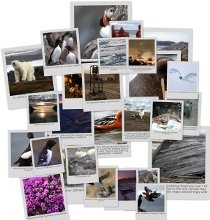Visit to the polar bear land
 Svenskøya (Swedish island) in a paranormal weather.
Svenskøya (Swedish island) in a paranormal weather.Last week we were lucky. A kind offer from my bosses. We were asked to join for an ivory gull counting trip heading to the islands. Weather was not good in Longyearbyen, but turned to amazing when approaching King Karls Land. Some minus degrees, blue sky and fresh breeze. Just-few-times-in-a-year weather for this area. The trip was fairly memorable...The place reminded me of Rijpfjorden. It must be the place to be. I love remote areas with harsh climate.












